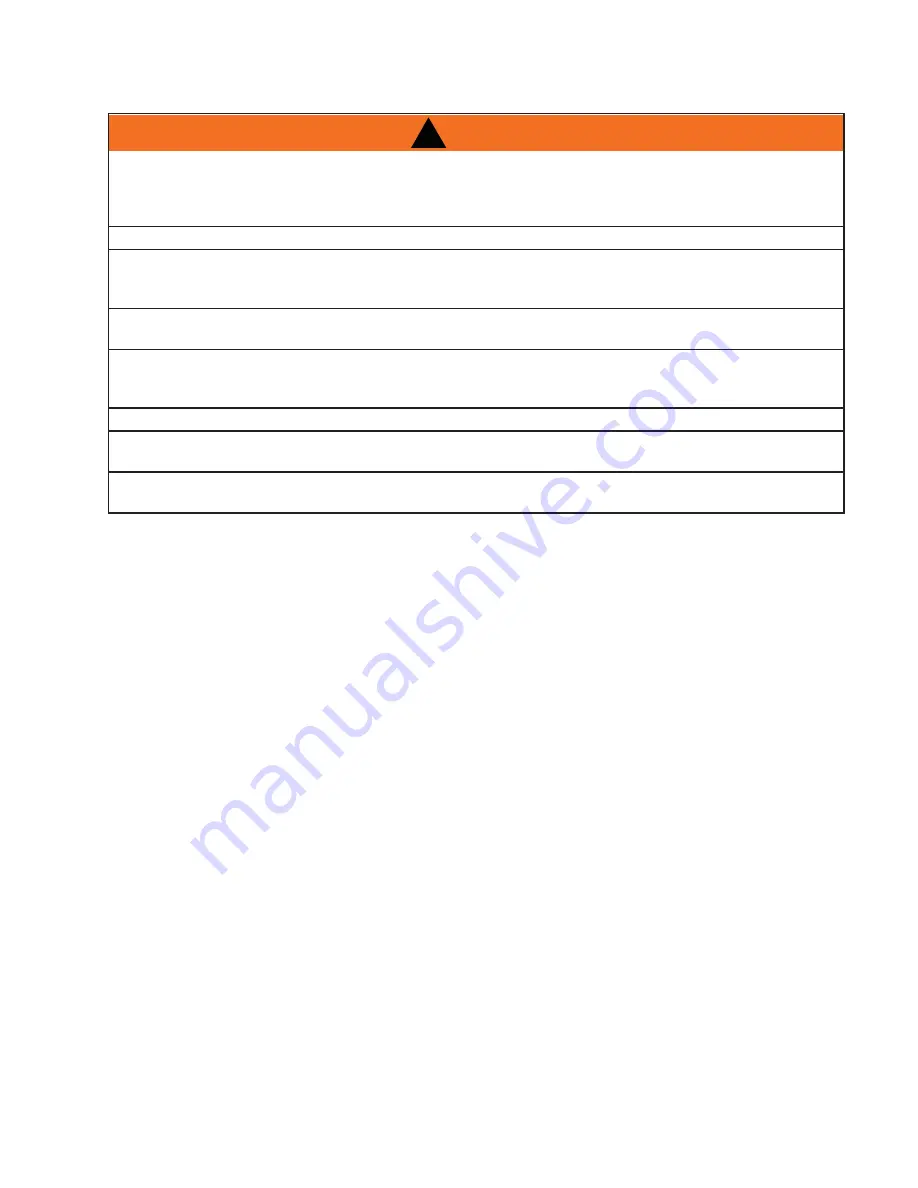
24
W415-0763 / B / 10.28.11
7.0 OPERATION
Your Napoleon EPA listed product is a Hi-Tech appliance, designed with the most advanced technology. The
appliance is extremely airtight. It has an exclusive direct outside air supply (optional kit), a feature designed to
prevent spillage, and to help keep your house free of carbon monoxide, in case of a down drafting chimney or
an internal negative pressure.
The fi rst fi re(s) in your appliance will be diffi cult to get going and keep going with little amount of heat being
generated. This is a result of the moisture being driven out of the fi re brick. Allow 30 to 40 hours of hot fi res
(temperatures in excess of 500°F - 600°F) before your appliance will perform normally. During the break-in
period (the fi rst 2 or 3 fi res) create only small, hot fi res using kindling; this will allow the fi rebrick to cure. Do
not be alarmed if small hairline cracks develop in the fi rebrick. This is a normal occurrence and does not pose
a safety hazard. The paint may also smell a little for the fi rst few fi res as it cures and you may wish to open a
door or window to alleviate the smell.
To start, a brisk fi re is required. Place loosely crumpled paper on the fl oor of the appliance and cover with dry
kindling. Open the air control fully by pulling the lever forward. Light the paper and leave the door slightly ajar
(one inch) until all kindling is burning. To maintain a brisk fi re, a hot coal bed must be established and main-
tained.
Slowly add larger wood (2x4 size pieces). Lay the pieces lengthwise from side to side in the hot coal bed with
a shallow trench between, so that the primary air can fl ow directly into this trench and ignite the fuel above.
When the fi re seems to be at its peak, medium sized logs may be added. Once these logs have caught fi re,
carefully close the door. (Closing the door too quickly after refuelling will reduce the fi rebox temperature and
result in an unsatisfactory burn.) Remember it is more effi cient to burn medium sized wood, briskly, and refuel
frequently than to load the appliance with large logs that result in a smouldering, ineffi cient fi re and dirty glass.
As soon as the door is closed, you will observe a change in the fl ame pattern. The fl ames will get smaller and
lazier because less oxygen is getting into the combustion chamber. The fl ames, however, are more effi cient.
The fl ames will remain lazy but become larger again as soon as the fi rebricks have been heated thoroughly
and the chimney becomes heated and provides a good draft. At this point, the roaring fi re that you see when
the door is opened is wastefully drawing heated room air up the chimney -- certainly not desirable. Always
operate with the door fully closed once the medium sized logs have caught fi re.
!
WARNING
ALWAYS OPERATE THIS APPLIANCE WITH THE DOOR CLOSED AND LATCHED EXCEPT DURING
START UP AND RE-FUELING. ALWAYS WEAR GLOVES TO PREVENT INJURY. DO NOT LEAVE THE
FIRE UNATTENDED WHEN THE DOOR IS UNLATCHED AS UNSTABLE WOOD COULD FALL OUT OF
THE FIRE CHAMBER CREATING A FIRE HAZARD TO YOUR HOME.
NEVER LEAVE CHILDREN UNATTENDED WHEN THERE IS A FIRE BURNING IN THE APPLIANCE.
NEVER USE GASOLINE, GASOLINE-TYPE LANTERN FUEL, KEROSENE, CHARCOAL LIGHTER
FLUID, OR SIMILAR LIQUIDS TO START OR ‘FRESHEN UP’ A FIRE IN THIS APPLIANCE. KEEP ALL
SUCH LIQUIDS WELL AWAY FROM THE APPLIANCE WHILE IT IS IN USE.
OBJECTS PLACED IN FRONT OF THE APPLIANCE SHOULD BE KEPT A MINIMUM OF 48”
FROM THE FRONT FACE.
ANY MODIFICATION OF THE APPLIANCE THAT HAS NOT BEEN APPROVED IN WRITING BY THE
TESTING AUTHORITY IS CONSIDERED BREACHING CSA B365 (CANADA) AND ANSI NFPA 211
(USA).
OPEN AIR CONTROL (AND DAMPER WHEN FITTED) BEFORE OPENING FIRING DOOR.
HOT WHILE IN OPERATION, KEEP CHILDREN, CLOTHING AND FURNITURE AWAY. CONTACT MAY
CAUSE SKIN BURNS. WEAR GLOVES TO OPERATE YOUR APPLIANCE.
BURNING YOUR APPLIANCE WITH THE DOORS OPEN OR AJAR CREATES A FIRE HAZARD
THAT MAY RESULT IN A HOUSE AND OR CHIMNEY FIRE.
Summary of Contents for EPA 1100
Page 34: ...34 W415 0763 B 10 28 11 27 20 45 30 32 33 34 40 38 16 25 39 35 29 28 13 12 15 24 26 17 36...
Page 37: ...37 W415 0763 B 10 28 11 43 1 12 0 SERVICE HISTORY...
Page 38: ...38 W415 0763 B 10 28 11 13 0 NOTES 44 1...
Page 39: ...39 W415 0763 B 10 28 11 44 1...
Page 40: ...40 W415 0763 B 10 28 11 44 1...
















































